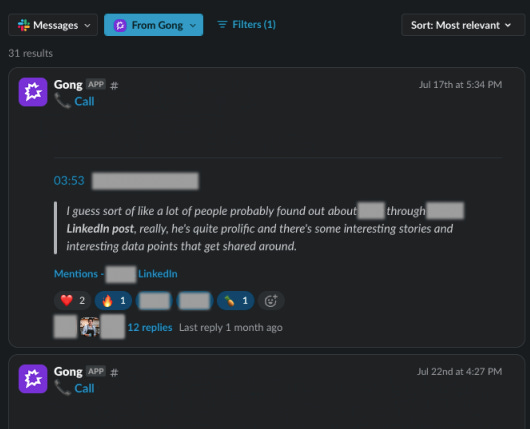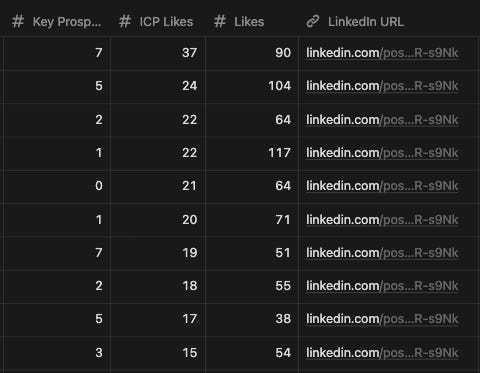What is high calorie content?
How to reach busy customers who are default unreachable
There’s so much noise on the internet today that most business leaders actively protect their time and attention.
They have EAs sitting on their LinkedIns and spend time and money in meditation and cold plunges.
These are the customers we want to engage with the most, but they’ve been trained to protect their minds and limit their content consumption. So how do we actually reach them?
I think we have to create content so useful that it earns a must-read slot in the customer’s inbox or becomes a must-listen podcast in their morning routine.
My producer friend, Julia, calls this “high calorie content” — content with so much information density that the customer bookmarks it and finds time for it later.
Even for the most offline people, high calorie content forces its way into your mindshare. It’s information so valuable or perspective so unique that it gets talked about over coffee, shared in company Slacks, and becomes a part of a community’s cultural dialogue.
High calorie attention is a promise of value in exchange for time and attention.
When the promise of value is delivered, the content gets organically shared and talked about.
Social media gives you the wrong metrics to measure high calorie content.
Likes, impressions, and avg view duration reflect the platform’s incentives to keep users on feed so advertisers can monetize attention.
What really matters is whether your content builds trust and attracts a community.
When I work with founders, we measure the caloric density of content in a few ways:
Reputation bar: Am I proud to put my name on it?
Trusted circle: Do advisors and peers find it genuinely useful?
Differentiation: Does it stand out against everything else my customer is reading and listening to?
AI Advisor: If I ask ChatGPT to role-play as my customer, what about it is incorrect or missing?
On the distribution side, we also design signals to complement traditional follower and impression metrics:
Gong triggers: We set up triggers for specific phrases when prospects or customers mention our LinkedIn content on calls.
ICP alignment: For every LinkedIn post, we run scripts to see if we’re engaging with our ideal customer profile. We look at likes filtered by title, company, and our dream list of key prospects. These are much lower numbers, but far more directionally valuable.
Because 99% of internet users are lurkers, what we really care about is engaging the loyal core who will tell others about your content.
For every piece of content we make — every podcast our core community listens to — we want them to feel like the promise of value was delivered, so that they look forward to the next one.
Long term, content is about community over virality.
By feeding the core community, high calorie content will find its way to a larger audience.
Ultimately, creating high calorie content is effortful and expensive (I’ve already rewritten this email 5 or 6 times this week). So I think it’s important to remember the why of it all:
To build a network of people you want to have relationships with
To deeply engage with the material itself (don’t make content about stuff you hate!)
To compound surface areas for luck and asymmetric upside
Brand is a bucket where individual drops of trust are earned over time. I think content is still the most effective way to earn those droplets. When you do this over a very long time horizon, that bucket unlocks unthinkable opportunities.
I encourage you to think of content in this way, beyond likes, sign ups, and PDF downloads. Those are nice, but the forest, the big picture is even better than the trees.
Shapeshift is a podcast production company telling the stories of people on the authentic path.
If this was a helpful to you, please share it with a friend!



